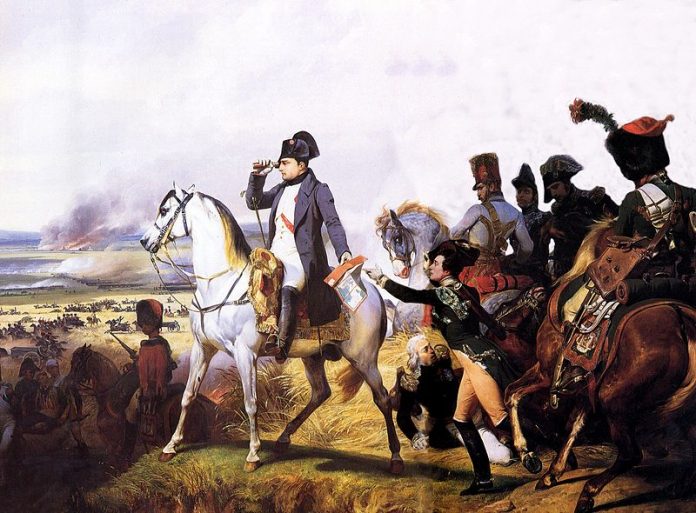
Probably more than 300,000 troops gathered on the battlefield near Wagram, approximately 150,000 on each side of the conflict. The supreme Austrian commander was Archduke Charles, the younger brother of the then Austrian Emperor Francis.
The Battle of Wagram ended on July 6, 1809 with the victory of Napoleon Bonaparte. The battle is significant because it led to Napoleon’s great victory over the Austrian Empire, which then had to give up vast territories in a peace treaty. For example, Napoleon could annex the Illyrian provinces to the French Empire, and Austria lost much of Poland, as did Tyrol and the Salzburg area.
The battle of Wagram took place in Austria, about 15 kilometers northeast of Vienna. The town of Wagram still exists there today, under the name Deutsch-Wagram, and is about 20 kilometers away from today’s Austro-Slovak border. The mentioned battle took place only a few kilometers north of the battlefield, where a month and a half earlier the equally famous battle of Aspern and Essling had taken place. Namely, all the mentioned places are located in the area of the Moravian plain, which is located on the opposite side of the Danube in relation to Vienna.
More than 300,000 troops gathered on the battlefield near Wagram, approximately 150,000 on each side of the conflict. The supreme Austrian commander was Archduke Charles, the younger brother of the then Austrian Emperor Francis. After the victory at Wagram, Napoleon gave his close associate Marshal Berthier the title of Prince of Wagram (fr. Prince de Wagram) as the so-called the winning title (similarly Marshal Masséna was Prince of Essling, and Marshal Davout Prince of Eckmühl).




